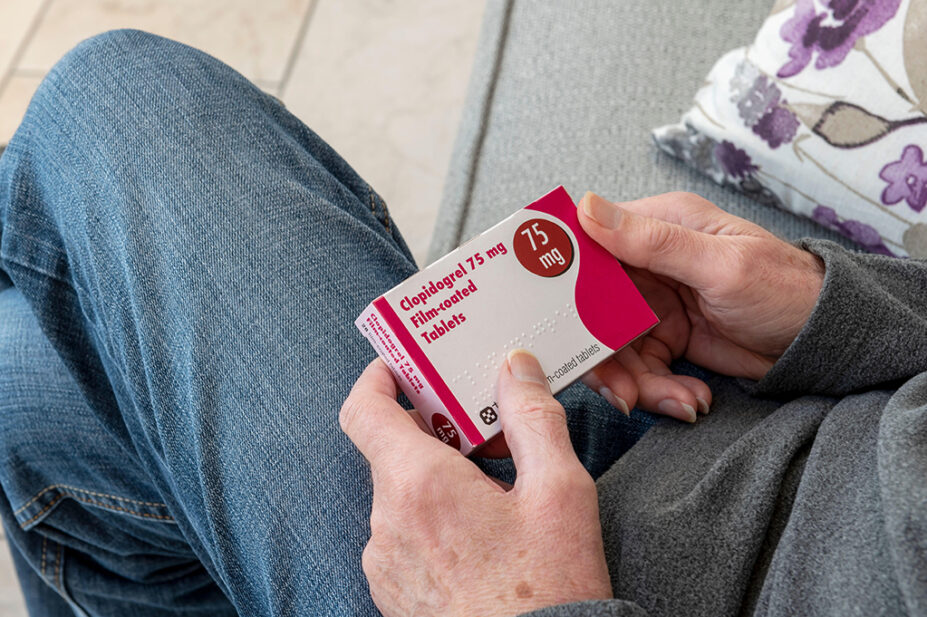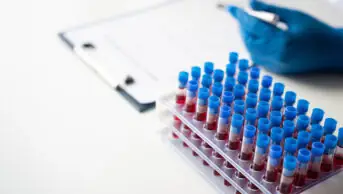
PURPLE MARBLES / Alamy Stock Photo
More than 2,000 acute stroke patients with an indication for clopidogrel treatment have been genotyped in the UK’s first CYP2C19 genotyping project at NHS Tayside in Dundee, Scotland.
Between April 2022 and March 2024, the stroke service at NHS Tayside identified and tested 2,300 patients and discovered that 29% of those tested were poor or intermediate CYP2C19-clopidogrel metabolisers who should — following international guidelines — be prescribed an alternative antiplatelet for secondary prevention of stroke.
Clopidogrel, an antiplatelet medication, is metabolised into its active form by an enzyme encoded by the CYP2C19 gene. Around 32% of people in the UK have a variant of the CYP2C19 gene, meaning that the enzyme’s function is reduced and clopidogrel will not be as effective for them.
The National Institute for Health and Care Excellence published guidance in July 2024 recommending CYP2C19 genotype testing to assess if clopidogrel is a suitable antiplatelet drug for people who have just had an ischaemic stroke or a transient ischaemic attack.
The project at NHS Tayside involved developing a Taqman-based assay for relevant CYP2C19 variants (*2 *3 and *17) to NHS genetics laboratory standards.
A clinical pathway was implemented for requesting tests at diagnosis of non-cardioembolic ischaemic cerebrovascular events, as well as follow-up reporting and communication with primary care.
Within one week, 98.9% of results were reported to the stroke team.
Individuals identified as having impaired clopidogrel metabolism were prescribed aspirin, dipyridamole, ticagrelor or their combinations.
Alex Matos, a specialist clinical pharmacist for stroke, who is involved in the project, began implementing pharmacogenomic testing for stroke as part of the P4ME project — a collaboration between the University of Dundee and NHS Tayside — in 2022.
Describing the past two years of the project for The Pharmaceutical Journal, Matos said he could “happily report that this implementation has been well received by both clinicians and patients alike”.
“Successful elements in our implementation included engaging with senior stroke clinical decision makers early on with one clear message: the implementation of pharmacogenomic testing is an additional tool being offered to them to improve patient safety and care, it should not be seen as an additional task being asked of them and their already stretched resources,” he said.
Matos added that results of the project “were in line with published prevalence figures for loss of function variants in a predominantly white European population, such as the one of Tayside”.
Research published in 2023 showed clopidogrel to be less effective in British South Asian patients, compared to patients of European descent.
Of 44,396 Bangladeshi and Pakistani participants, 57% had a genetic variation of CYP2C19, with 44% found to be intermediate metabolisers of clopidogrel and 13% found to be poor metabolisers.
Data from a previous study showed 2% and 8% of people of European and Central South Asian descent to be poor clopidogrel metabolisers, respectively.
Commenting on the project, Juliet Bouverie, chief executive of the Stroke Association, said: “Stroke devastates lives and leaves people with life-long disability. We know that many stroke survivors spend the rest of their lives fearing another stroke, so it’s great to see that more people could be given appropriate help to significantly cut their risk of recurrent stroke.
“Anything we can do to prevent the misery that stroke can cause is ultimately good news. Getting on the right medication and taking it as advised is the best way for stroke survivors to reduce their risk of further strokes.”


